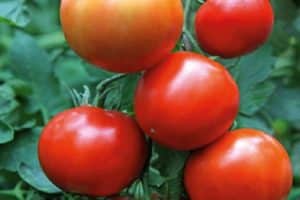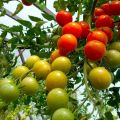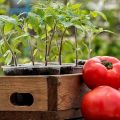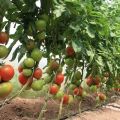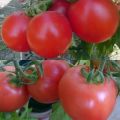Characteristics and description of the Verlioka tomato variety, its yield and cultivation
The first generation hybrids, which include the Verlioka plus tomato, are distinguished by high yields and resistance to a number of diseases of nightshade crops. But in addition to these obvious advantages, the description of the variety includes earlier ripening periods and excellent fruit quality.
Characteristics of the variety "Verlioka plus F1"
In hybrids, the properties of the parent varieties used in the breeding process are strongly manifested. The characteristics and description of the Verlioka tomato variety demonstrate a whole list of consumer and commercial qualities that have made the tomato popular not only among gardeners. Farms have successfully grown the Verliok f1 hybrid commercially, taking advantage of its high yields and early maturity. In addition, "tomatoes on a branch" look very impressive and it is in this form that they can enter the distribution network.
Basic parameters of tomato
Tomatoes Verlioka F1 are not capricious, well adapted to growing conditions in greenhouses without heating, even in early spring. Main characteristics and their description:
- the hybrid is resistant to stress associated with temperature extremes, air humidity, low light;
- belongs to the category of early maturing, with the duration of the growing season 101-105 days;
- the height of the plant ranges from one to one and a half meters. In some cases, it manages to grow up to 1800 cm. It belongs to the category of tall. Requires a garter;
- type of bush determinant, medium branched, medium leafy. Leaves are ordinary, corrugated, dark green;
- inflorescences are laid through 2 leaves, the first above the level of 8-9 leaves. The bush should be formed by a lateral shoot in one stem;
- from 6 to 12 fruits are formed on the brush. The yield of Verliok's tomato is high, up to 5 kg per plant;
- the hybrid is resistant to pathogens of a number of viral diseases.
With early planting, the crop can be harvested as early as June.
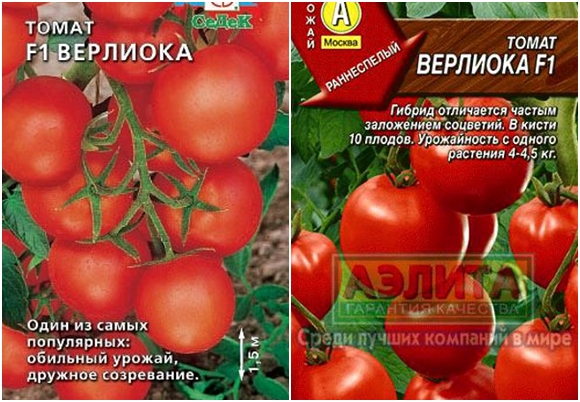
An important difference between F1 hybrids and conventional varieties is genetic resistance to a variety of diseases and pests. This is especially true for growing tomatoes in greenhouses, where pathogenic microflora and fauna are formed due to limited crop rotation. In heated winter greenhouses, only first-order F1 hybrids are grown.
Characteristics of the fetus
The fruits can be attributed to the classic examples of tomatoes. They have an ideal presentation due to their traditional color, shape and even, almost identical fruit size.
Description of Verliok's tomatoes:
- tomatoes are even, have a flat-round shape, with slight ribbing at the base;
- weight ranges from 100 g to 140 g;
- fruit of five chambers, with an average number of seeds. The pulp is dense, juicy;
- the skin is of medium thickness, smooth, shiny, bright red with a slight orange tint;
- the taste of tomatoes is sweet and sour, with pronounced tomato notes;
- multi-purpose tomatoes for fresh consumption and any kind of workpieces.
Tomatoes have a real tomato flavor and behave great in whole-fruit preparations. They can be pickled, salted. Suitable for making tomato juice, puree, paste. Fresh tomatoes are good in salads, used for decorating dishes.
Basic requirements for growing and care
Tomato hybrid "Verlioka plus" - intended for growing early harvest. But the plants need help. More precisely, you will need to observe the regimes of watering, lighting and feeding. The ripening time is also influenced by the techniques for the correct formation of the plant.
Seedling method of growing
Growing seedlings is a process that requires attention and accuracy. It is during this period that the success of the future harvest is laid.
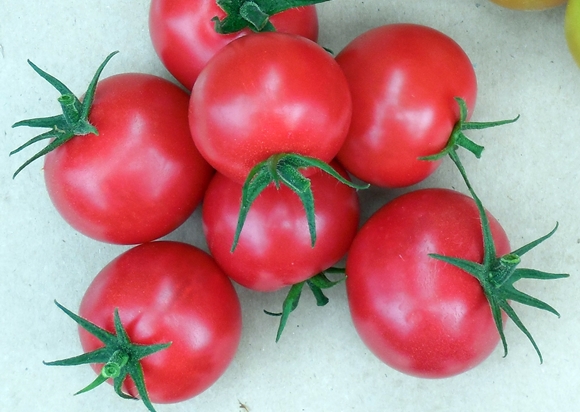
- Seeds are planted for seedlings in March - April on the basis that by the time of planting in the greenhouse, it must be at least 40 days old.
- The seeds are disinfected, treated with a growth stimulant, and hardened.
- The prepared seeds are planted in a moist soil, deepening by 1-1.5 cm, and germinated at 22-25 degrees.
- With the emergence of seedlings, the temperature regime is carefully monitored. Illumination should be maximum, and the temperature should be reduced in the daytime to 15-18 degrees and at night - to 8-10 degrees.
- In phase 2 of permanent leaves, the seedlings dive, preferably into peat containers, which are later planted in the greenhouse without disturbing the earthy coma.
- Seedling care involves timely watering, loosening the soil, and fertilizing.
- Top dressing is carried out every 10-14 days with ready-made complex fertilizers, or mullein in a ratio of 1: 5. From poultry droppings, a fertilizing solution is prepared at the rate of 1:15.
- A week before transplanting into the greenhouse, several hardening sessions are carried out, accustoming the plants to lower temperatures and full lighting.
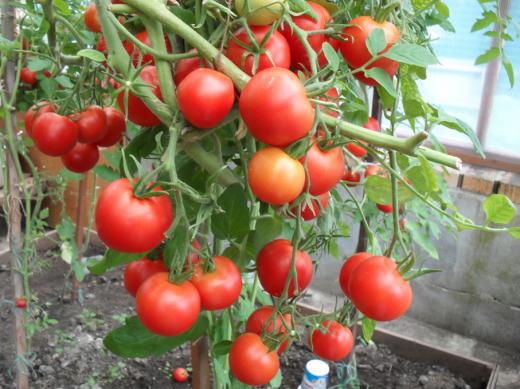
If the temperature in April is warm, then the seedlings are planted in the greenhouse in the middle or end of the month.
Important! When the air temperature drops to 10 degrees, the tomatoes stop growing, the pollen does not ripen, as a result the ovaries fall off. The heat-loving culture blooms only at temperatures from 15 to 35 degrees. Therefore, it is necessary to maintain the correct temperature regime in the greenhouse.
Transplanting seedlings into a greenhouse
Caring for tomato seedlings should provide them with the fastest possible survival and full growth.
- The soil in the greenhouse should be prepared in the fall. Before planting, the soil is loosened, watered abundantly.
- Fortified, healthy plants are planted in a greenhouse according to a 40 x 50 scheme.
- In a greenhouse with tomatoes, the temperature should be maintained at 22-25 degrees during the day and 16-18 degrees at night.
- Plants are watered sparingly, preventing the soil from drying out. The top layer of soil is loosened and huddled around the lower part of the stem, thereby ensuring the growth of the root system and gas exchange.
- The plant is formed from one stem, leaving 4-8 brushes on it for ripening. The yellowed leaves are removed in time and the stepsons are cut at a level of 3-5 cm. The stem is tied to a support or trellis.
- Top dressing is carried out every 3 weeks, in accordance with the state and stage of development of tomatoes.
With proper care, the first crop is harvested in June. The main picking of tomatoes is in July, early August, it is characterized by amicable ripening.

